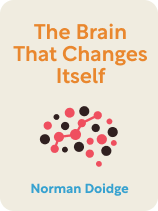

This article is an excerpt from the Shortform book guide to "The Brain That Changes Itself" by Norman Doidge. Shortform has the world's best summaries and analyses of books you should be reading.
Like this article? Sign up for a free trial here.
What is brain mapping? Who developed the first brain map?
Early brain maps were developed based on localizationism—the paradigm that postulated that every function has a specific location in the brain. Although it’s not quite how it works, brain maps became very useful in the study of the brain.
Keep reading to learn about the advent and evolution of human brain mapping.
Developing a Map of the Brain
Wilder Penfield created the first full human brain map by using an electric probe to manually activate certain areas of the brain and asking the patient what sensations they felt in response. For example, if he activated a place in the brain, and in response the patient said they felt pressure in their right foot, he would note that area as being associated with the right foot. Over the course of these procedures, he formed a map of the entire brain. Because the brain has no pain receptors, patients were able to stay awake during these types of brain surgeries so they could respond to Penfield’s questions.
(Shortform note: While Penfield’s use of electrodes led to the revolutionary development of the full brain map, the technology had other applications that were more questionable. Electrodes can be used to detect electrical activity, but also to provide electrical stimulation. In the 1950s and 60s, a scientist named Robert Heath implanted electrodes in a number of patients’ brains, sometimes without their full informed consent, and used them to perform various experiments. The most controversial of these was his use of electrodes to attempt to convert a gay man to heterosexuality, a practice now known to be not only ineffective but extremely harmful.)
Initially, electrodes could only measure brain activity on a large scale, detecting activity in thousands of neurons at once. Later, scientists developed microelectrodes that allowed them to view electrical activity at a microscopic level. Microelectrodes were so small they could be placed beside a neuron and monitor the activity there in response to stimuli like being touched.
Scientists could see that neurons that were physically near each other corresponded to body parts that were also physically near each other—for example, neurons controlling movement of the index finger were near neurons controlling the middle finger. The maps created in this way are even more detailed than modern brain scanning technology, but because the process is so tedious and time-consuming, it’s rarely used.
| Human Brain Mapping Today Modern brain mapping is usually done using electroencephalograms (EEGs), which involve placing a cap containing electrodes on a patient’s head and measuring the brain’s electrical activity through their scalp. Another method is magnetic resonance imaging, which shows not only the brain’s electrical activity but also an image of the structure of the entire head and its parts, including bones, blood vessels, fat, and muscle. Though these scans aren’t able to detect neuronal activity on a microscopic level like microelectrode mapping, they’re also much less invasive since they don’t require surgery and can be performed in as little as 20 minutes. This mapping technology gives us the ability to measure neurons’ response to stimuli and their roles in things like motor function and language processing, but it’s not yet advanced enough to study how higher level thinking or behaviors occur in the brain—things like attention or lying. Unfortunately, some companies ignore these limitations in order to make money and will claim to have technology that can use brain imaging to analyze consumer behavior or detect lies, which isn’t possible with our current technology. |

———End of Preview———
Like what you just read? Read the rest of the world's best book summary and analysis of Norman Doidge's "The Brain That Changes Itself" at Shortform.
Here's what you'll find in our full The Brain That Changes Itself summary:
- How brain plasticity can help those with brain damage or congenital brain disorders
- Stories of real people whose lives have improved thanks to neuroplasticity
- A look at some of the negative effects neuroplasticity can have






